#haus hannover
Text

King George III by Benjamin West.
9 notes
·
View notes
Text
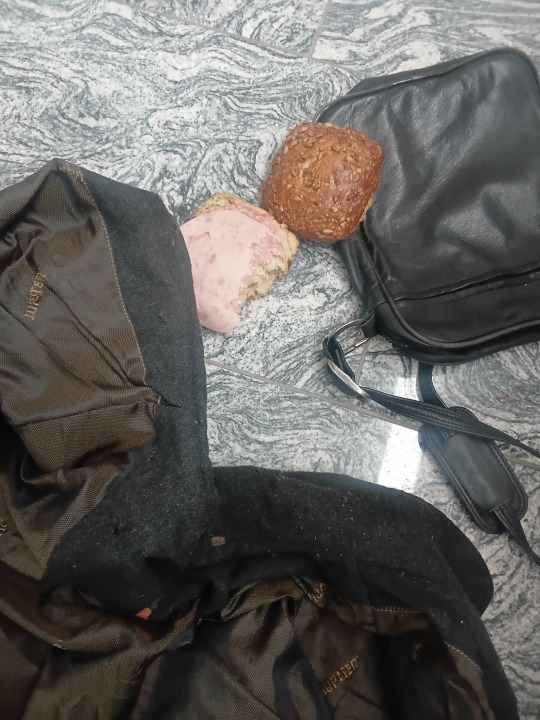
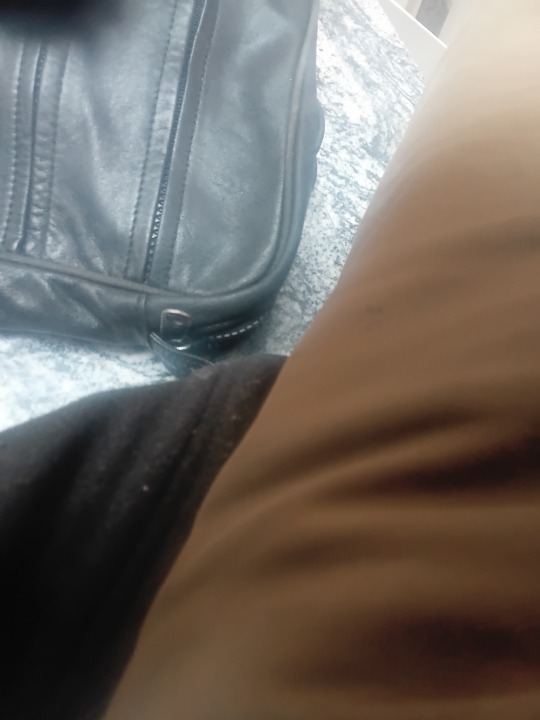
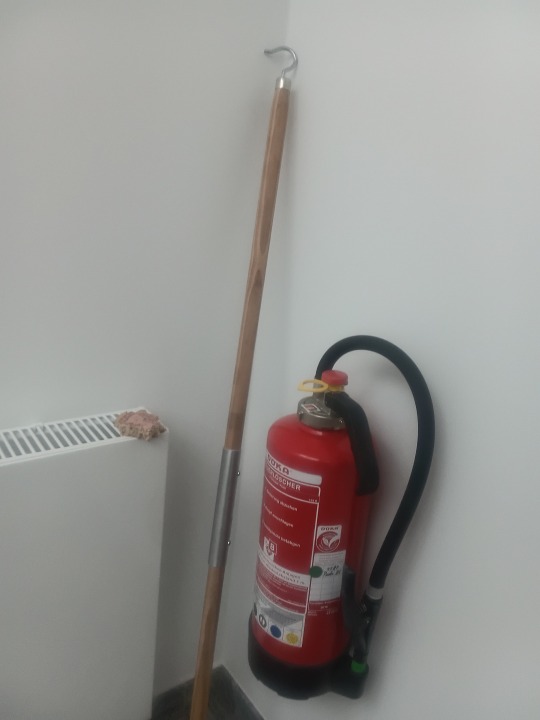

Ess-Sachen stammten diesmal aus dem 'A-licks' in Paderborn.
(*Beim Universum - und auch seinen Truppen - reagierte niemand wirklich oder sonderlich begeistert selbst auch darauf dann wieder, und den erneuten Versuch! Seit Jahrzehnten gehöre ich bereits mit zu den dortigen Offizieren, ich war zu dem Zeitpunkt selber noch mächtig jung, als ich dort Fähnrich wurde, als erst leicht älterer Knabe, und man erstmals mit dieser Bitte an mich herantrat!
Ob ich innerlich bereit dazu wäre, es zu werden!)
*Mond *Jupiter
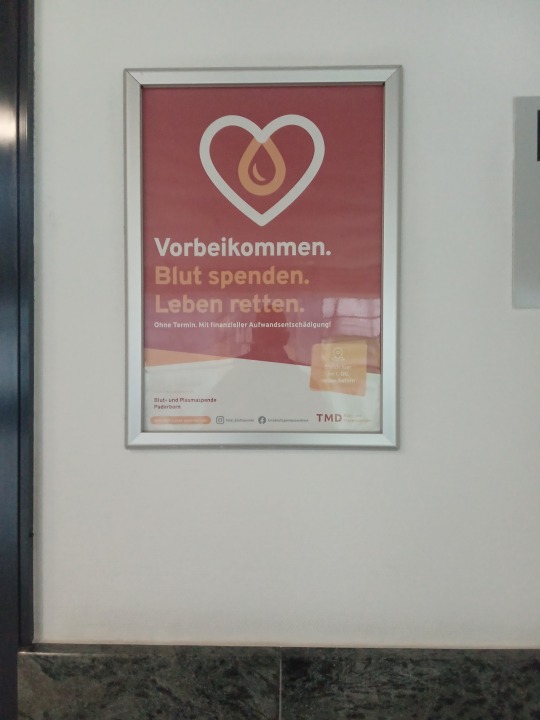


'Wir machen von heut' an Ernst mit Lustig!!'
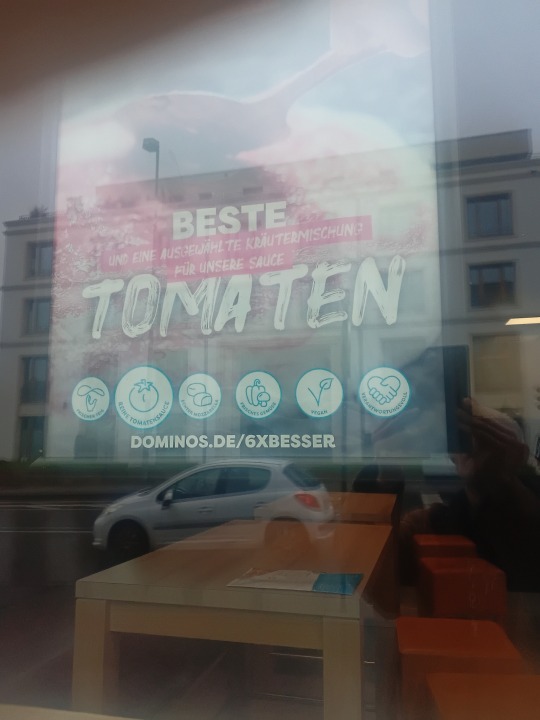



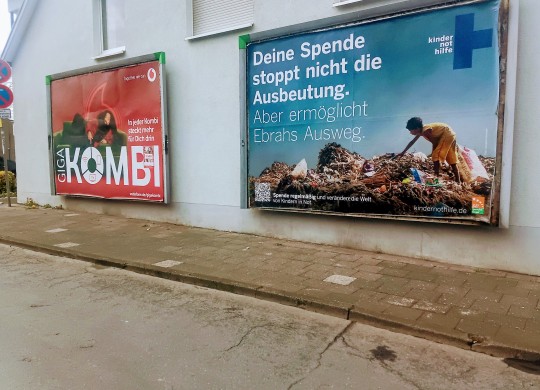

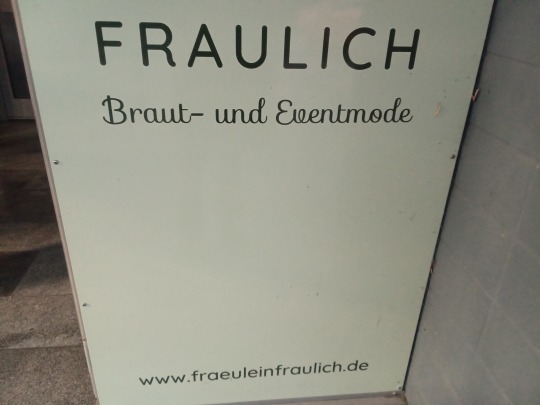
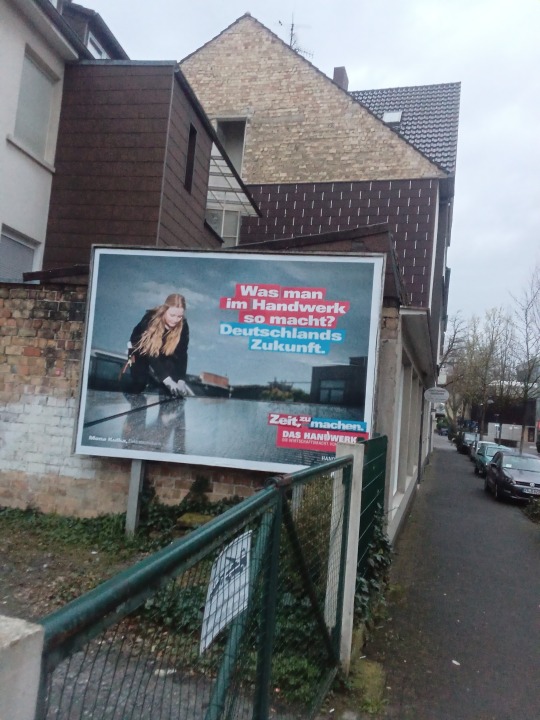


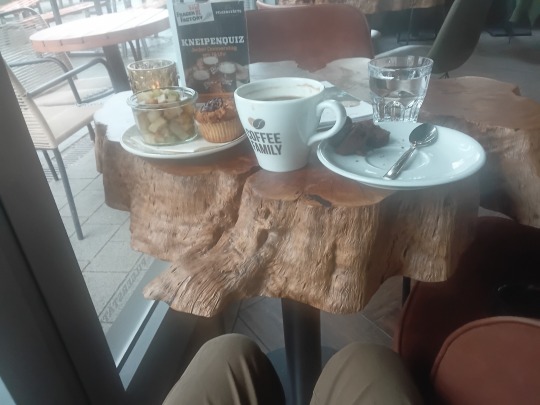

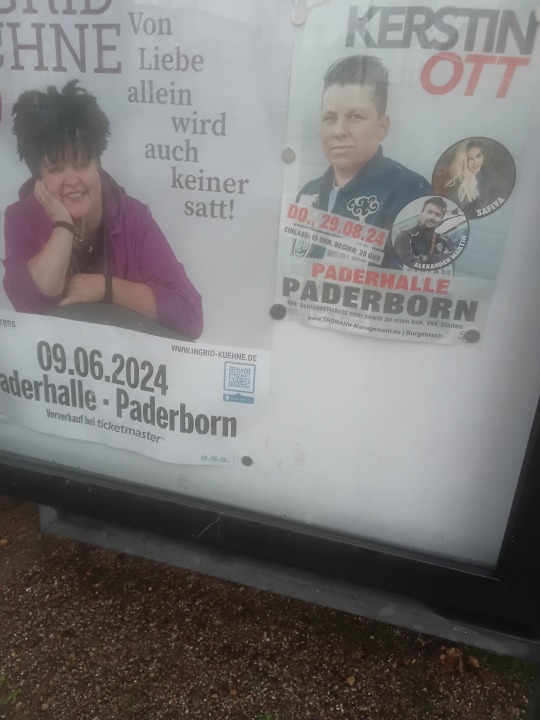

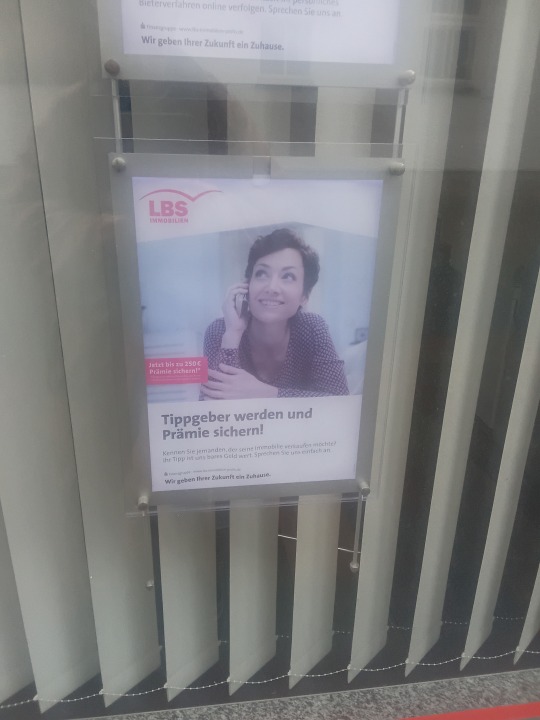

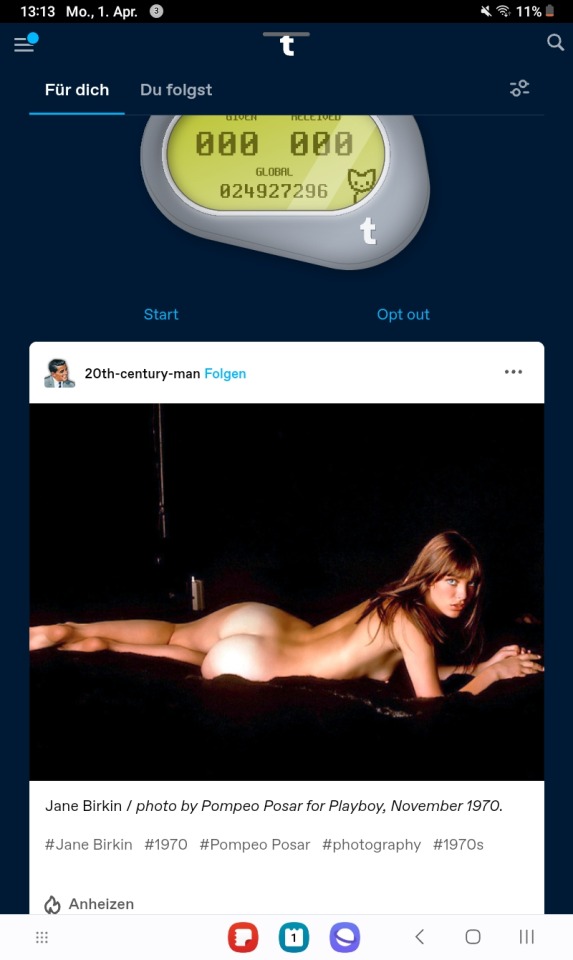
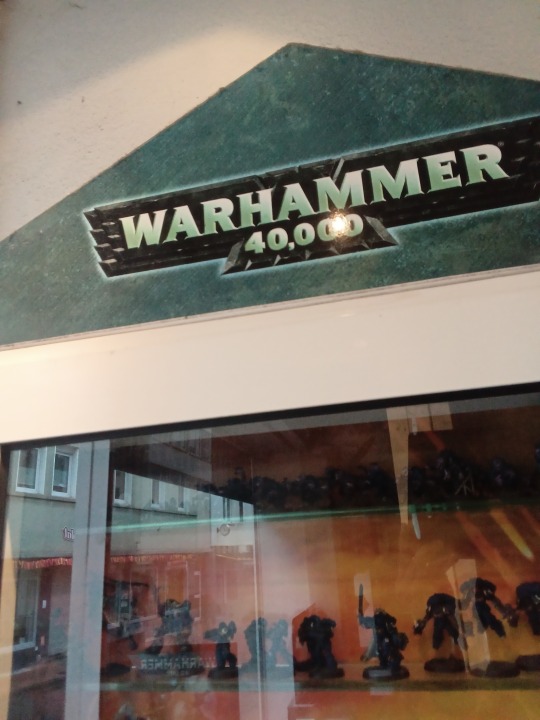
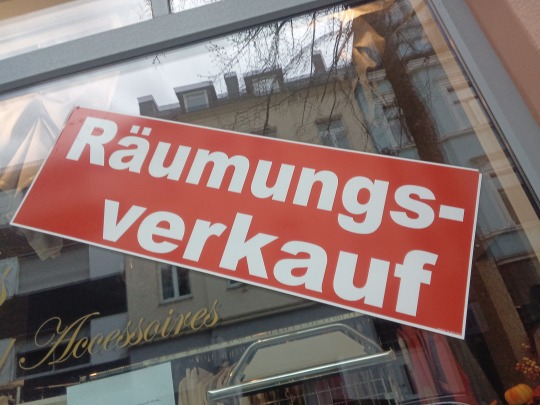
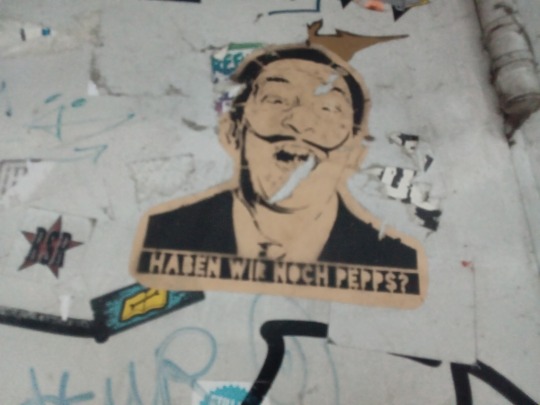
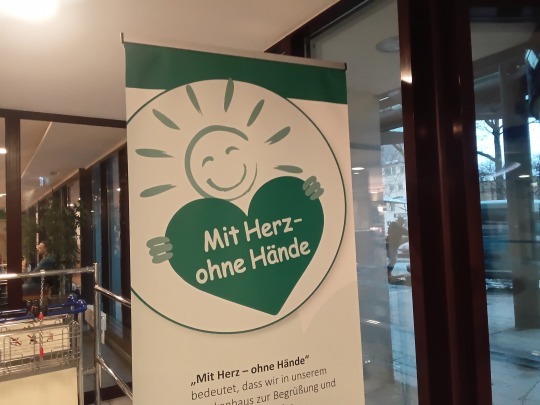
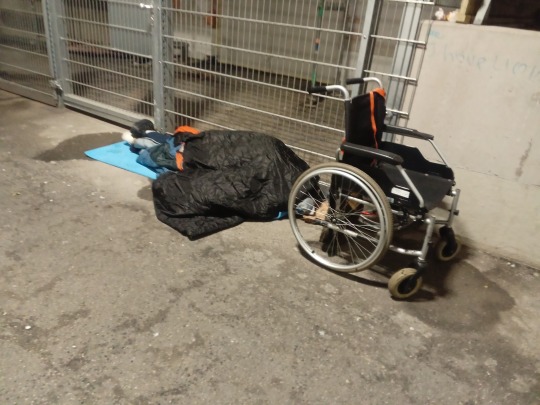

Bald folgt schon der Komödie vielleicht sogar gleich auch vierter Teil. Ich muss jetzt nur noch als Mann dafür so wie bisher überhaupt dabei auch überleben!!
#Alex#Restaurants#Ketten#paderborn#der Lloyd#England#die Filmkomödie in Teilen#der Komödie vierter Teil#bayrischer Komödienstadel#Hannover Schauspiel Haus
0 notes
Text
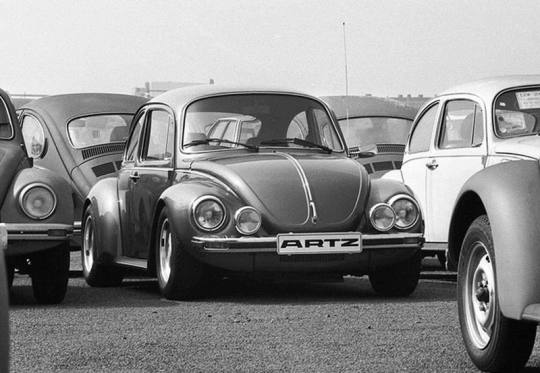


The Volkswagen Auto-haus Nordstadt dealer in Hannover, Germany, had a very creative director back in the 1970s and 1980s named Günter Artz.
In 1973, Artz built a Porsche 911-powered Volkswagen that caught the attention of many people, leading him to establish his modification business ARTZ, a subsidiary of Nordstadt.
To create this Volkswagen Mr. Artz combined several vehicles. It started with the body of a VW 1302 (flat glass), the chassis of a 914 and the mechanics of a Porsche 911. While the car was being manufactured VW launched the 1303 (round glass) Mr. Artz then decided to put the roof from the 1303 onto his project. To achieve that factory “look”, almost everything on the 3 platforms was modified, 1000 hours were used in welding alone! In the end the result was a Volkswagen 1303 “mid engine” with 210hp and a 5speed in a chassis that could keep up with the best sports cars of its time.
20 notes
·
View notes
Text

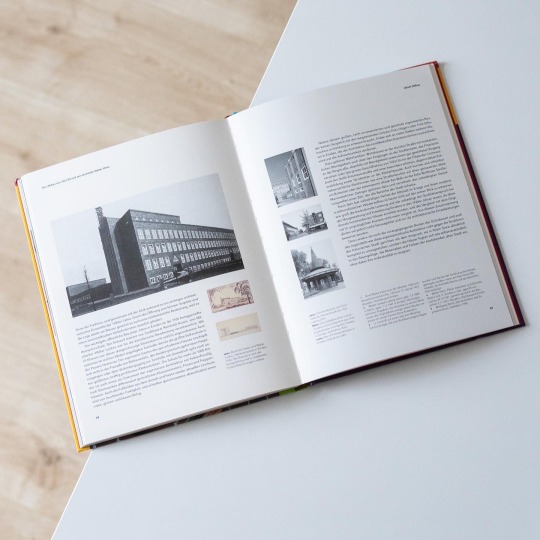
The four decades between the 1880s and the start of World War I brought about significant change for the German town of Emden in Lower Saxony: a canal connection to the Ruhr area led to a significant increase of traffic and goods turnover as Emden at the same time served as a hub for the sea transport of goods coming from the Ruhr area. This boom required a comprehensive extension of the port area and consecutively new dwellings and infrastructure.
This trend continued after the end of the First World War in 1918 and architecture-wise peaked under the aegis of the head of the municipal planning and building office Reinhold Haasis’: he served from 1925 to 1933 when he was removed by the National Socialist. During his tenure the city of Emden, which had more than doubled its population between 1885 and 1933, saw the construction of a number of remarkable buildings characterized by an amalgam of local brick architecture and Expressionism.
One of the buildings conceived during this period was the former agricultural school/savings bank, a design by Walter Heim that was built in 1927/28. It is a striking example of the local expressionist idiom, significantly more restrained than those in Hamburg or Hannover, that especially on the inside surprises with expressive details and an unusually bold color scheme. This color scheme was restored during the buildings’ renovation and extension carried out by Helmut Riemann in 1999, a revitalization that was followed up by the present book: „Expressionistische Architektur in Emden - Ein Haus von 1928 und seine Neugestaltung“, edited by Ulrich Höhns and published by Dölling und Galitz in 2002. In addition to providing a lavishly illustrated overview of the reconstruction and extension of the building the book features a thorough description of the original building on basis of historic photographs and plans but also sheds some light on the architect Walter Heim as well as the expressionist architecture in Emden. On a final note the volume also includes a history of Emden’s ascent to a significant harbor city and a detailed overview of how the city area changed with regards to infrastructure, housing and industry.
In view of these insightful essays the book is more than just the monograph of a building but also an introduction to the history of city and its expressionist architectural heritage. Well done!
17 notes
·
View notes
Text
Es ist keinesfalls nur Hannover betroffen. Aber es ist ein Anfang.
3 notes
·
View notes
Text
Getting ready fort our! We leave tomorrow and Finland is the first stop!! Can’t wait! Hopefully I can get my packing done but we’ll see maybe Doug will have to come along!
Here are the dates get your tickets now!!! See you up front!
6/8- Rockfest, Hyvinkää, FL
6/10 - AN Club, Athens, GR
6/13 - Roxy Concerts, Flensburg, DE
6/14 - Copenhell, Copenhagen, DK
6/15 - Graspop Metal Meeting, Dessel, BE
6/16 - F-Haus, Jena, DE
6/17 - Intertony Festival Open Air, Chonjce, PL
6/19 - Fabriyki Biedermanna, Łódź, PL
6/21 - Kulturzentrum Faust, Hannover, DE
6/22 - Jera On Air, Ysselsteyn, NL
6/23 - Glazart, Paris, FR
6/24 - Lo Bolegason, Castres, FR
6/25 - Chez Narcisse, Le Val d’Ajol, FR
6/27 - Le Lauterie Artifact, Strasbourg, FR
6/28 - The Black Lab, Lille, FR
6/30 - Mystic Skate Cup, Prague, CZ
7/1 - Ruhrport Rodea, Hunxe, DE
7/2 - Reality Bites, Saarbrucken, DE
7/4 - Secret Place, Montpellier, FR
7/5 - Diff’art, Parthenay, FR
7/7 - Mondandroll Fest, Mondragon, ES
7/8 - Dolmen Music Fest, Villacayo, ES
7/10 - Cafe Central, Weinheim, DE
#sickofitall #soianyc #nyhc #hardcoreworldwide #newyorkhardcore #undergroundmusic #summertour #summer2023 #summerfestivals #metal #punk #thrash #crossover #rocknroll #itsclobberingtime
#sickofitall#new york hardcore#undergroundmusic#artists on tumblr#crossover thrash#punk#metal#sickofitallnyc#hardcore punk#music#hardoreworldwide#thrash#rocknroll#summer festival#summer tour
4 notes
·
View notes
Photo

Another shot from @timtronckoe 🤘 Looking forward to the next shows with @eisbrecher_official : 08/07/22 Laichingen (DE)|Rock Dein Leben* 09/07/22 Ballenstedt (DE)|RockHarz* 16/07/22 Jütebog (DE)|Motorcycle Jamboree* 21/07/22 Laukaa (FI)|John Smith Rock 24/07/22 Köln (DE)|Amphi Festival* 05/08/22 Wolfhagen (DE)|Kulturzelt* 07/08/22 Hildesheim (DE)|Mera Luna* 17/08/22 Dinkelsbühl (DE)|Summer Breeze* 19/08/22 Vallamand (CH)|Rock the Lakes 20/08/22 Saint-Nolff (FR)|Motocultor* 27/08/22 Schleswig DE)|Baltic* 17/09/22 Neu-Ulm (DE)|Volle Kraft Voraus Festival* 30/09/22 Leipzig (DE)|Haus Auensee* 01/10/22 Wiesbaden (DE)|Schlachthof* 07/10/22 Berlin (DE)|Columbiahalle* 08/10/22 Hamburg (DE)|Edel-Optics.de Arena* 14/10/22 Bochum (DE)|RuhrCongress* 15/10/22 Hannover (DE)|Swiss Life Hall* 16/10/22 Fürth (DE)|Stadthalle* 21/10/22 Wien (AT)|Gasometer* 22/10/22 Dresden (DE)|Alter Schlachthof* 28/10/22 Ludwigsburg (DE)|MHP Arena* 29/10/22 München (DE)|Zenith* 18/11/22 Weissenhäuser Strand (DE)|Metal Hammer Paradise 16/12/22 Augsburg (DE)|Spectrum* (SOLD OUT) 17/12/22 Augsburg (DE)|Spectrum* (SOLD OUT) 27/04/23 Strasbourg (FR)|La Laiterie* 28/04/23 Zürich (CH)|X-TRA Limmathaus* 29/04/23 Innsbruck (AT)|Music Hall* 30/04/23 Losheim am See (DE)|Hexentanz* 09/05/23 London (UK)|O2 Academy Islington* 11/05/23 Antwerpen (BE)|Trix* 12/05/23 Eindhoven (NL)|De Effenaar* 13/05/23 Luxemburg (LU)|Den Atelier* 16/05/23 Paris (FR)|La Machine Du Moulin Rouge* 17/05/23 Lyon (FR)|CCO Villeurbanne* 18/05/23 Barcelona (ES)|Razzmatazz 2* 20/05/23 Köln (DE)|Unter Schwarzer Flagge (*Bereits gekaufte Tickets behalten ihre Gültigkeit!) . . #eisbrecher #timtronckoe #live #livemusicphotography #bass #bassist #bassplayer #gmm22 #rock #metal #musician (at Graspop Metal Meeting) https://www.instagram.com/p/CfJxZUyom07/?igshid=NGJjMDIxMWI=
2 notes
·
View notes
Text
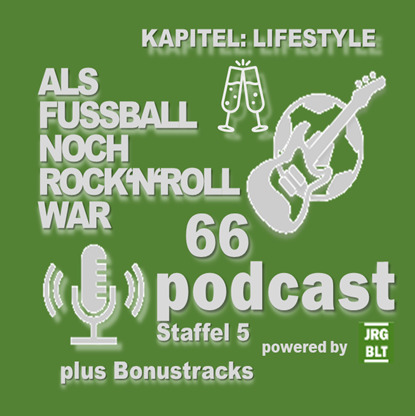
Es folgt am 30. Mai 2024 mit 🄴🄿🄸🅂🄾🄳🄴 66 die letzte des Kapitels „𝗟𝗶𝗳𝗲𝘀𝘁𝘆𝗹𝗲 𝗱𝗲𝗿 𝟭𝟵𝟵𝟬𝗲𝗿 𝗝𝗮𝗵𝗿𝗲“ der #Podcast 🎙️- #RetroShow "𝗔𝗟𝗦 𝗙𝗨𝗦𝗦𝗕𝗔𝗟𝗟 𝗡𝗢𝗖𝗛 𝗥𝗢𝗖𝗞'𝗡'𝗥𝗢𝗟𝗟 𝗪𝗔𝗥"⚽🎸🕺.
In 🄵🄾🄻🄶🄴 30 und dem Titel „𝗟𝗶𝗳𝗲𝘀𝘁𝘆𝗹𝗲 𝗶𝗻 𝗱𝗲𝗻 𝟭𝟵𝟵𝟬𝗲𝗿 𝗝𝗮𝗵𝗿𝗲𝗻 – 𝗽𝗿𝗶𝘃𝗮𝘁𝗲𝘀 𝗚𝗹ü𝗰𝗸, 𝗛𝗼𝗺𝗲, 𝘀𝘄𝗲𝗲𝘁 𝗛𝗼𝗺𝗲, 𝗟𝗲𝗯𝗲𝗻 𝘂𝗻𝗱 𝗥𝗲𝗶𝘀𝗲𝗻“, geht es auch darum, wie ich dann Anfang der 𝟭𝟵𝟵𝟬𝗲𝗿 𝗝𝗮𝗵𝗿𝗲 mein neues persönliches #Lebensglück fand und wie ich dann auch ein gemeinsames Haus für uns in einer idyllischen Lage in #Hannover kaufte.
Diese Jahre waren geprägt von wirtschaftlichen und gesellschaftlichen Entwicklungen, die sich auch im Lifestyle🥂 der 𝟵𝟬𝗲𝗿 𝗝𝗮𝗵𝗿𝗲 widerspiegelten. Der wachsende #Wohlstand war inzwischen sehr stark vom #Konsum geprägt.
„𝗟𝗶𝗳𝗲𝘀𝘁𝘆𝗹𝗲 𝗶𝗻 𝗱𝗲𝗻 𝟭𝟵𝟵𝟬𝗲𝗿 𝗝𝗮𝗵𝗿𝗲𝗻 - 𝗗𝗮𝘀 𝗭𝗲𝗶𝘁𝗮𝗹𝘁𝗲𝗿 𝗱𝗲𝗿 𝗨𝗻𝗲𝗻𝗱𝗹𝗶𝗰𝗵𝗸𝗲𝗶𝘁: 𝗘𝗶𝗻 𝗕𝗹𝗶𝗰𝗸 𝘇𝘂𝗿ü𝗰𝗸 𝗮𝘂𝗳 𝗱𝗲𝗻 𝗠𝗶𝗹𝗹𝗲𝗻𝗻𝗶𝘂𝗺𝘄𝗲𝗰𝗵𝘀𝗲𝗹“, so heißt es dann in 🄵🄾🄻🄶🄴 31.
Damit endete dann nicht nur ein #Jahrzehnt und nicht nur ein #Jahrhundert, es endete ein #Jahrtausend. Und es gibt in der gesamten #Menschheit nicht viele, die so etwas erleben durften.
Aber bevor es soweit war, ging es mit Gina auf ein paar Reisen in die USA🇺🇸.
Zuerst einmal zum #Weihnachtsshopping nach #NewYorkCity 🗽 und dann ein anderes Mal auf eine Tour durch die #Südstaaten. 𝗗𝗶𝘅𝗶-𝗟𝗮𝗻𝗱, 𝗕𝗮𝘆𝗼𝘂𝘀, 𝗦𝗼𝘂𝗹 𝗙𝗼𝗼𝗱-𝗞ü𝗰𝗵𝗲, 𝗧𝗮𝗯𝗮𝘀𝗰𝗼 𝘂𝗻𝗱 𝗖𝗮𝗷𝘂𝗻-𝗞𝘂𝗹𝘁𝘂𝗿.
In der Betrachtung des Lifestyles der 𝟭𝟵𝟵𝟬𝗲𝗿 𝗝𝗮𝗵𝗿𝗲𝗻 und dem #Millenniumwechsel wird deutlich, wie tiefgreifend gesellschaftliche und technologische Veränderungen unsere #Werte, #Gewohnheiten und #Prioritäten geprägt haben, und wir können daraus wertvolle Erkenntnisse für die Gestaltung unserer #Zukunft ziehen.
𝗗𝗶𝗲 𝗘𝗻𝘁𝘄𝗶𝗰𝗸𝗹𝘂𝗻𝗴 𝗱𝗲𝘀 𝗟𝗶𝗳𝗲𝘀𝘁𝘆𝗹𝗲𝘀 𝗱𝗲𝗿 𝗹𝗲𝘁𝘇𝘁𝗲𝗻 𝘀𝗲𝗰𝗵𝘀 𝗝𝗮𝗵𝗿𝘇𝗲𝗵𝗻𝘁𝗲 𝘃𝗲𝗿𝗱𝗲𝘂𝘁𝗹𝗶𝗰𝗵𝘁 𝗱𝗶𝗲 𝗳𝗮𝘀𝘇𝗶𝗻𝗶𝗲𝗿𝗲𝗻𝗱𝗲 𝗘𝘃𝗼𝗹𝘂𝘁𝗶𝗼𝗻 𝘃𝗼𝗻 𝗧𝗿𝗮𝗱𝗶𝘁𝗶𝗼𝗻𝗲𝗻, 𝗧𝗿𝗲𝗻𝗱𝘀 𝘂𝗻𝗱 𝗧𝗲𝗰𝗵𝗻𝗼𝗹𝗼𝗴𝗶𝗲𝗻, 𝗱𝗶𝗲 𝘂𝗻𝘀𝗲𝗿 𝗟𝗲𝗯𝗲𝗻 𝗶𝗻 𝘃𝗶𝗲𝗹𝗳ä𝗹𝘁𝗶𝗴𝗲𝗿 𝗪𝗲𝗶𝘀𝗲 𝗴𝗲𝗽𝗿ä𝗴𝘁 𝗵𝗮𝗯𝗲𝗻 𝘂𝗻𝗱 𝘄𝗲𝗶𝘁𝗲𝗿𝗵𝗶𝗻 𝗽𝗿ä𝗴𝗲𝗻 𝘄𝗲𝗿𝗱𝗲𝗻.
𝗘𝗶𝗻𝗳𝗮𝗰𝗵 𝗿𝗲𝗶𝗻𝗵ö𝗿𝗲𝗻 𝗶𝗻 𝗱𝗶𝗲𝘀𝗲 𝗘𝗽𝗶𝘀𝗼𝗱𝗲 𝘂𝗻𝗱 𝘃𝗶𝗲𝗹 𝗦𝗽𝗮ß 𝘂𝗻𝗱 𝗩𝗲𝗿𝗴𝗻ü𝗴𝗲𝗻 𝗱𝗮𝗯𝗲𝗶.
Die gesamte chronologische Zeitreise ist zu hören in den Staffeln 1 bis 4 der Podcast-Retro-Show „ALS FUSSBALL NOCH ROCK’N’ROLL WAR“
🄴🄿🄸🅂🄾🄳🄴🄽-🅅🄾🅁🅂🄲🄷🄰🅄:
🄴🄿🄸🅂🄾🄳🄴🄽:
0 notes
Text
Kalender - Bilder unserer Landschaft 1994 der Vereins- und Westbank mit den Inhalten:
- Hamburg, Blick vom Axel-Springer-Haus, 1958: Oskar Kokoschka
- Das Bild der Stadt
- Lüneburg, Stadtansicht von Süden, um 1444 bis 1447: Hans Bornemann
- Greifswald im Mondschein, um 1817: Caspar David Friedrich
- Kiel von Düsternbrook, um 1827/28: Hans Jacob Paludan
- Der Marktplatz in Hildesheim, um 1830: Johann Heinrich Hintze
- Hannover, Cafe Kröpcke, 1934: Karl Pohle
- Der neue Markt in Stralsund, Mitte des 19. Jahrhundert: Unbekannter Künstler
- Hamburg, Illumination auf der Alster, 1911
- Blick auf Magdeburg von Nordosten, 1836: Carl Hasenpflug
- Lübecker Hafen mit Holstentor, 1907: Edvard Munch
- Altonia, 1900: Otto Marcus
- Blick auf Rostock von Westen, 1809: Georg Friedrich Kersting
- Altstadtmarkt in Braunschweig, 1955: Max Pfeiffer Watenphul
0 notes
Text
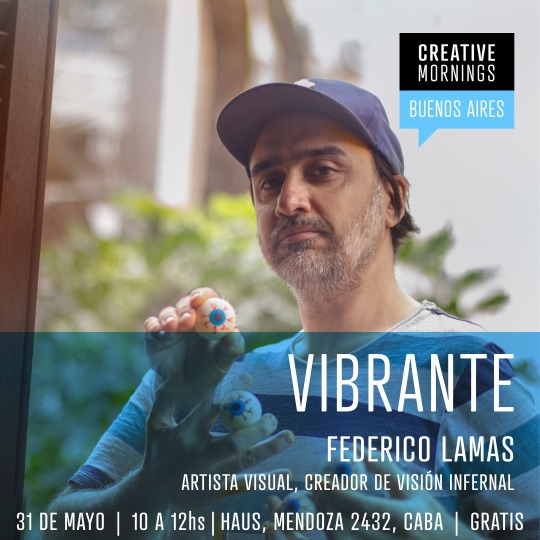
✨🎤¡Federico Lamas es nuestro orador VIBRANTE! 🎤✨
Vamos a charlar junto a este artista visual independiente y repasar su inspiradora carrera, bajo el tema VIBRANTE!!
Realizó residencias artísticas en Hannover, São Paulo, México DF, Santa Cruz de la Sierra y Québec City, y ha exhibido su obra en Argentina, México, Brasil, Canadá, Portugal, Alemania y Noruega entre 2019 y 2024. 🌎
Su trabajo, que incluye videos experimentales e instalaciones, fue presentado en festivales como VIDEOBRASIL, donde ganó en dos ocasiones. 🏆🏆 Sus sets de VJ han sido parte de museos y festivales alrededor del mundo, incluyendo MUTEK Argentina, MAMBA, Bienal de Arte Joven, B23 Berlin, ArtLab Buenos Aires, y muchos más.
Y, como si fuese poco, también colaboró con la escena teatral 🎭 diseñando videos para producciones en el Teatro Nacional Cervantes, Teatro Gral San Martín, Teatro Colón, y el CETC.
Sus trabajos están disponibles en tiendas alrededor del mundo o en sus redes.
⚡Te animas a vibrar con su arte? ⚡
🗓 ¿Cuando? Viernes 31/5/24
⏰ 10 a 12 hs
📍¿Dónde? Haus (Mendoza 2432, CABA)
🎨 Regalitos de Filgo
🍫 Sorpresa de Drimer Chocolates y Fresca y Batata
😊 Evento gratuito
#CMBuenosAires
0 notes
Text
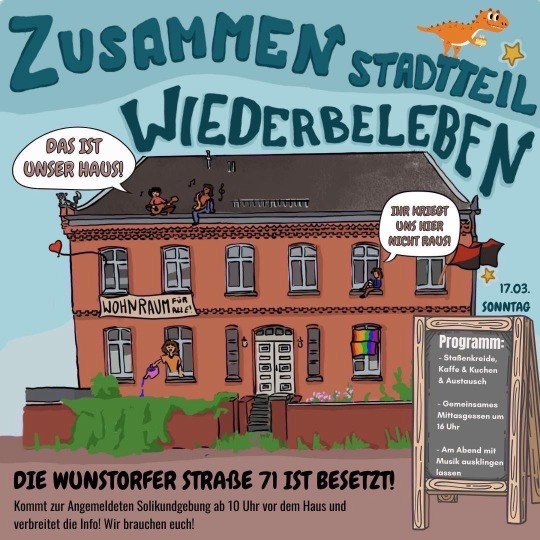
+++ Hausbesetzung parallel zum CSD! +++
Vergangene Nacht haben wir das Haus am Klagesmarkt 8 in Hannover besetzt. Somit haben wir das Gebäude nach über 10 Jahren spekulativem Leerstand wiederbelebt.
Die Stadt Hannover plant Kürzungen im Kultur- und Sozialbereich in sechsstelliger Höhe, die Mieten steigen seit Jahren immens und in Hannover kommen auf einen wohnungslose Menschen gleich mehrere leerstehende Wohnungen. Das werden wir nicht mehr hinnehmen. Wir sehen, dass Wirtschaft und Politik nicht daran interessiert sind, jungen Menschen notwendige Frei- und Wohnräume zur Verfügung zu stellen. Deshalb haben wir uns dazu entschlossen uns diese Räume selbstbestimmt zu nehmen.
Queere Menschen leiden ohnehin schon an systematischer Queerfeindlichkeit. Durch den aktuellen Rechtsruck und das Erstarken der AfD sehen wir diese Bedrohung verstärkt und eine Notwendigkeit in der Entstehung von Freiräumen als queere safer spaces. Es braucht mehr als eine Party-Parade im Jahr, wo queere Menschen sie selbst sein können. Außerdem wollen wir Orte schaffen, an denen Menschen selbstbestimmt, solidarisch und gemeinschaftlich leben können. Es braucht einladende Orte zum Bleiben, an denen sich Menschen begegnen, voneinander und miteinander lernen können.
Oops, we did it again... Bereits am 17.03. besetzten wir ein Haus, wie sich hier nachlesen lässt: https://t.me/Aktionsticker_Leinemasch/1121
Auch für das Haus ist es nicht die erste Besetzung. Vor fünf Jahren war es schon einmal besetzt, wurde aber leider kurz darauf geräumt um bis jetzt wieder ungenutzt zur Spekulation leer zu stehen.
Vor dem Haus wurde eine Mahnwache als legale Anlaufstelle angemeldet. Also teilt diesen Ticker, packt eure Friends ein und kommt vorbei! Lasst uns gemeinsam die Frei- und Wohnräume nehmen, die wir brauchen!
1 note
·
View note
Photo

Ernst August III, Duke of Brunswick and Lüneburg. By Gustav Rienäcker.
30 notes
·
View notes
Text
Das Haus ist super, der Eigentümer ein deutscher aus Hannover-aber es gab einiges zu tun...insgesamt 16m öffenbare Glasfront, vermutlich noch nie gewartet-die Errichterfirma angerufen, KV 800€, WC Deckel erneuern, alles was mit Wasser zu tun hat verkalkt, Küchenabluft defekt, AC dreckig...Firma gekommenund komplett auseinandergebaut...etc. -Vermieter froh das ich mich kümmere und hat alle Kosten übernommen.
0 notes
Text
MICE AND MAN: CARSTEN HÖLLER AND ROSEMARIE TROCKEL
MICE AND MAN: CARSTEN HÖLLER AND ROSEMARIE TROCKEL
By Daniel Birnbaum
The creatures outside looked from pig to man, and from man to pig, and from pig to man again; but already it was impossible to say which was which.
—George Orwell, Animal Farm
HIGH HEDGES SURROUND THE BUILDING, hiding it from view like a public toilet that the denizens of this little German city, Kassel, aren’t particularly proud of. From the outside it’s not very hospitable, its strangely minimal architecture making it look like a bunker. The door is ajar, as if to facilitate quick access when the need is pressing. But once you enter the building, an altogether unexpected atmosphere prevails. You have entered a place of calm reflection, meditation, even wonder. Groups of people, young and old, sit and lie on gray carpets arranged on a concrete incline. Everybody is looking in the same direction, as if silently scrutinizing a large painting in a museum. But what these people are marveling at is alive: a group of pink pigs with big black spots. Carsten Höller and Rosemarie Trockel’s Ein Haus für Schweine und Menschen (A house for pigs and people), presented in 1997 at Documenta X, was a pigpen complete with a sow feeding her enormous litter. The pig family, relaxing behind a large sheet of glass, was sometimes so still that it didn’t seem quite real. At times you had the feeling you were looking at a large photograph. Then, suddenly, one of the piglets would start moving, and the fiction of a still life disintegrated.
What is an animal? In a series of collaborations that began in 1996, Höller and Trockel have staged encounters between man and beast that make this question pressing. And in a second step that seems to follow on the heels of the first, one is led to inquire, And what precisely are we who ask this question? Höller and Trockel have realized ten projects together, the final one being their contribution to EXPO 2000 Hannover, Augapfel: Ein Haus für Tauben, Menschen und Ratten (Eyeball: A house for pigeons, people and rats), 1996/2000. Hens, pigs, mosquitoes, bees, silverfish, rats, and pigeons have all appeared in this series of works, which Höller referred to in a recent lecture as “monuments of incomprehensibility.” Both artists have produced works with zoological ingredients before (Höller is also a devoted ornithologist), but never has the hermeneutic problem been so evident as in this series of collaborations. “If a lion could talk, we could not understand him,” Wittgenstein wrote in the Philosophical Investigations, and Höller and Trockel appear to agree: We’re surrounded by animals, some of them we know well, some we even love, but they remain strangers to us. They’re inscrutable.
As an introduction to the book A House for Pigs and People (2000), Höller and Trockel pose a long series of questions—moral, epistemological, and political—concerning the relation between humans and animals: “Do races living on a vegetarian diet behave differently than meat-eaters when it comes to territorial expansion? Is there a link between Hider’s vegetarian eating habits and what he did? Why is it that worldwide many more men kill than women? How would it be if we ourselves had to kill the animals we eat and could no longer delegate the unpleasant side of it? How would it be, as proposed by Porphyrius, to eat but only without killing and thus to live on fruit and withered cabbage leaves?”
The Documenta piece, perhaps the best-known work in the artists’ collaborative series, emphasized the importance of the eye. Because of the glass, all the other senses are bracketed. The pigs cannot be touched, smelled, or heard. They’re reduced to visual phenomena. As it turns out, the glass separating the humans from the pigs was transparent only from one side: Seen from the pigs’ perspective, the glass was a mirror. The humans who, after visiting the house, wanted to get a pig’s-eye view of the setup—that is, watch the humans watching—soon realized that the people weren’t visible to the swine: The family of pigs was free to walk in and out of the house, which opened onto a muddy outdoor area, and one could thus get a glimpse of the pigs from around back if one walked around the hedges, but the human audience on the ramp would always remain out of view, behind the mirror.
There is something about a pane of glass that fictionalizes whatever is on the other side. Thus the pigpen became a kind of theater with animals onstage. One could even take the glass for a large screen; this cinematic quality was emphasized in a smaller version of the piece presented as part of the 1999 show “Maisons/Häuser” at ARC Musée d’Art Moderne de la Ville de Paris, where the artists displayed the whole series of animal projects, some in the form of models. The miniature version of the Documenta work was titled Ein Haus für Schweine und Kinder (A house for pigs and children), a replica so small that only little kids could enter. For an adult to find out what was going on in the house, he or she would have to ask the children, who would report that they’d seen a film (which, in this version, was indeed the case). A film about pigs.
“The brutality of a society, whose dominant trait can be clearly described as maximization of economic profit, is reflected in the fate of those without rights and of animals,” Höller and Trockel contend. So is this a political work about injustice and oppression, even an allegory of class struggle? When Kafka’s “A Report to an Academy,” the story about an ape that is transformed into a human being, was to be published in Martin Buber’s journal Der Jude in 1917, Buber wanted to call it a parable, but Kafka preferred the more neutral description “animal story.” Most readers, perhaps swayed by the site of publication, take the story to be about the plight of the assimilated Jew. But for Kafka it was clearly important to keep the possibilities of interpretation open. Similarly, the questions asked by Höller and Trockel in relation to their house for pigs and humans don’t confine the work to one specific reading but instead open up labyrinths of associations. In a recent essay about these animal projects, French critic Nicolas Bourriaud observes that they are not only about our relation to other living creatures, but just as much about our relation to ourselves. There are things in us that are other than us: “To come to terms with the pig, the mosquito, or the rat also means to make peace with the piggish, mosquito-like, and rat-like parts of ourselves, with a whole community of processes that inhabit and determine us.” The encounter with the otherness of the animal thus reminds us of the foreigner inside ourselves. The “becoming animal” in the short stories of Kafka has been interpreted by Gilles Deleuze and Félix Guattari as a liberatory strategy, a radical way out of the oedipal structure of European bourgeois subjectivity. Asked about such fantastic transformations, Höller remarks, “Nevertheless, also after reading Kafka, I am no further along in knowing how to view the animal. Or how it might be to be an animal.”
Höller and Trockel’s first collaborative animal project was Mückenbus (Mosquito bus), 1996, in which humans were to encounter mosquitoes inside a Volkswagen van to test whether sheer willpower alone could influence the insects’ tendency to bite. Why is it that some people get bitten a lot, while others are completely spared? Does it have anything to do with the mind-set of the person in question? In the end, because of the risk of disease spreading from one visitor to the other, the project had to remain largely hypothetical.When the bus was finally exhibited, no mosquitoes could be seen, heard, or otherwise perceived (for the simple reason that there weren’t any). But in later projects, the visual qualities have been much more emphatic, as in A House for Pigs and People, where the pigs and piglets appeared as part of some hyperreal tableau vivant. Actually, the whole setup could be seen as a piece of optical machinery emphasizing the eye of the spectator and the completely objectified animals that are not even allowed the opportunity to meet the gaze of the observer. Addina, 1997, a closely related work that was originally presented in Palermo and takes its name from the Sicilian word for chicken, reversed the visual arrangement: Here it was the animal who played the role of spectator. Behind the polyester walls of a huge egg-shaped room, real eggs were being produced by forty-eight hens that could climb ramps up to a narrow wooden platform; from there, they were afforded a vantage on the oval room through egg-shaped windows that acted as mirrors when seen from the other side. This privileged perspective offered a view of the human visitors eating their eggs. The humans, on the other hand, saw nothing of the hens, hidden as they were behind the two-way mirror. Instead, other senses were activated: The visitors could hardly avoid the sound and odor of the chickens behind the walls.
In his 1997 catalogue essay “A House Divided,” Richard Shusterman gives a political interpretation of Höller and Trockel’s Documenta work: “There are also many human pigs in our social world: races and ethnicities that fail to gain our recognition because they are seen through the one-way glass of socio-cultural privilege. Very often such despised ethnicities are denigrated as swine, though Hegel, in denying the African’s humanity, compared him not to a pig but a dog.” All of this is no doubt true, but there are also millions of real pigs that live short and miserable lives in industrial confinement only to be sent to the slaughterhouse and made into cheap meals for the masses. One needn’t see the work as an allegory to see its political dimension. “Can domesticated animals protest against us in any other way than by diseases (swine fever, mad-cow disease, cardiac infarct)?” inquire the artists. These days, when militant vegans in Europe burn down burger joints and sausage factories, when apocalyptic minds declare that mad-cow disease is divine revenge, and less dogmatic souls like myself actively avoid certain meats, Höller and Trockel’s houses for humans and animals cannot be seen merely as amusing visual arrangements of various zoological specimens or as works about the incomprehensibility of animal behavior and nothing else. They’re also about power. Indeed, the philosophical underpinnings of humanism itself seem to be at stake. Do we humans need constantly to reassure ourselves of our supremacy over other species through the exclusion of that which is not us but looks, smells, and acts a bit like us—i.e., the animal?
In an interview conducted in 1989 by Jean-Luc Nancy for Confrontations (“Eating Well”), a speculative and outspoken Jacques Derrida delineated a theory of the Western subject as an essentially meat-eating creature. Western humanity has defined itself through a violent exclusion, and incorporation, of the animal: “The subject does not want just to master and possess nature actively. In our cultures, he accepts sacrifice and eats flesh.” The subject of power is essentially male and carnivorous, says Derrida, and he inquires, “I would ask you: In our countries, who would stand any chance of becoming a chef d’Etat (a head of State) . . . by publicly, and therefore exemplarily, declaring him- or herself to be a vegetarian? The chef must be an eater of flesh.”
Höller and Trockel’s houses for animals and humans do not try to blur the border between man and other species, nor do they actively renegotiate the traditional notion of humanism. But their untiring exposure of the very line of demarcation forces the viewer to ask the same questions over and over: What is an animal? What is Man? These works never suppose that humans could inhabit a house where other creatures were living on the same terms. It’s always an issue of a power structure already visible in the architecture and of who is the subject watching and who the object. In Eyeball: A House for Pigeons, People and Rats, the optical associations are stressed even more. In fact, everything takes place in a giant eye. Built on a hill in the EXPO park in Hannover, this pavilion takes the shape of an eyeball, the iris and pupil directed skyward. One sees the strange-looking building from far away. A wooden canopy covers a circular steel sphere ten meters in diameter, producing the visual effect of a utopian architectural construction reminiscent of Buckminster Fuller’s geodesic dome or Galeron’s Globe Céleste built for the Universal Exposition in Paris a century ago. The artists’ original plan was to keep living animals in the gigantic eye. The iris was supposed to open at certain hours, letting the pigeons fly out at the top. What the artists ended up presenting in Hannover was a mechanical model, albeit an impressive one. Visitors could enter the construction from four directions on ramps. Inside the sphere, a never-ending automatic ballet was performed by metal rats and pigeons, pneumatically controlled. The viewers, standing on a circular balcony inside the eye, could see rats shooting out of tubes at the bottom of the construction. The birds in the upper regions of the sphere would suddenly start to move. Some would even flutter their wings and “fly.”
Höller and Trockel’s Eyeball, their final collaborative work addressing our relationship with the animal kingdom, sums up the dominant themes of the previous projects, radicalizing the role of the human gaze, transforming it into an organizing principle that also manifests itself architecturally. This pavilion is not a construction about the power of the eye, like the panopticon. This pavilion is an eye. But since the pupil is turned toward the sky, there are things going on inside that remain unseen. Here it’s no longer a question of such delicious creatures as hens and pigs that, according to Derrida’s model, have to be incorporated for humanity to define itself as other than animal. In this work, rather, it’s a question of animals normally considered unworthy of our attention, let alone respect. Dirty and despicable animals. Vermin. Rats and pigeons. But, in an uncanny way, they have entered a space that is interiority itself. They’ve made themselves at home in a home that I thought was only mine. Unheimlich.
Daniel Bimbaum is a contributing editor of Artforum
0 notes
Text

https://www.musikblog.de/2024/04/grossstadtgefluester-tickets-zu-gewinnen-4/
02.05.2024 AT-Salzburg – Szene 03.05.2024 AT-Wien – Arena Open Air (Ausverkauft!) 04.05.2024 AT-Graz – Orpheum 05.09.2024 Hannover – Capitol (Ausverkauft!) 06.09.2024 Münster – Skaters Palace (Ausverkauft!) 07.09.2024 Berlin – Columbiahalle (Ausverkauft!) 18.09.2024 Würzburg – Posthalle 19.09.2024 München – TonHalle (Ausverkauft!) 20.09.2024 Leipzig – Haus Auensee 25.09.2024 Hamburg – Sporthalle 26.09.2024 Köln – E-Werk (Ausverkauft!) 27.09.2024 […]
0 notes
Text
Reposted from @angryzeta We are super happy to announce our next European tour and a new album release 🎊☠️
Estamos muy contentxs de contarles que una vez más nos vamos de gira a Europa y vamos a estar presentando disco nuevo! 🎉☠️
23 MAY Vallekas : Shanty Town @shantywownmadrid
24 MAY Burgos • Taberna de Arroyal @latabernadearroyal
25 MAY Martzu • Medialdea Music Fest @mmf_mendialdea
29 MAY Saint Imier • Toxoplasmose @toxoplasmosefestival
30 MAY Biel • Café du Commerce
31 MAY Bern • Tripity @tripity.kollektiv
01 JUN Voodoo Rhythm Release Party @voodoo_rhythm_records
01 JUN Bern • Dead End @dead_end_bern
03 JUN Bern • Brasserie Lorraine @die_brasserie_lorraine
04 JUN Disaster Show Streaming @the_disaster_show
05 JUN Zürich • Alte Post
06 JUN Rorschach • Zelt Werk @zeltwek
07 JUN Winterthur • Grüntal
09 JUN Saint Gallen • Lukas Bar @lukasbarsg
11 JUN Saint Gallen • Rumpeltum
13 JUN Rosenheim • Alte Druckerei
14 JUN Dresden Schuster’s Family Barn
15 JUN Berlin • Berlin String Bash @berlinstringbash
16 JUN Berlin • House party
18 JUN Leipzig • Caracan @caracan_leipzig
19 JUN Hamburg • Rondenbarg
20 JUN Norden • Alte Backstube
21 JUN Wuppertal • Griestock
22 JUN Nijmegen • Kids n Billy’s @kidsnbillies.festival
23 JUN Liege • Lou’s Bar @lou_s_bar
25 JUN Aachen • Haus Party
27 JUN Middelburg • Kaffee T’hof @hayokaffeethof
28 JUN Rotterdam Bluegrass Festival @bluegrassfestival
29 JUN Asendorf • Kulturhaus B.O.
02 JUL Hannover • Cafee Glocksee @cafee_glocksee
03 JUL Hannover • List&Tucke Wagonplatz
04 JUL Köln • Sonic Ballroom @sonicballroom
05 JUL Amsterdam • Maloe Melo
07 JUL Antwerpen • Cafe Kamyon @cafekamyon
10 JUL Ghent • Bar Bricolage @barbricolage
09 JUN Obershanti • Oberschan
12 JUL Dorset • Rustic Stomp @therusticstomp
13 JUL Poole • Tape & grape
14 JUL Canterbury • The Anchor
15 JUL Bridgewater • The Cobblestones
16 JUL Brighton • The Prince Albert @theprincealbertbrighton
17 JUL Haarlem • Lokaal @lokaalhaarlem
18 JUL Emden • Grusy
20 JUL Wegenigen • Anarco Folk Fest @anarcha.folk.fest
26 JUL Tarragona • La Cantera Bike Bar @lacanterabikebar
28 JUL Santa Coloma • Bar Berenguer @barberenguer
1 note
·
View note